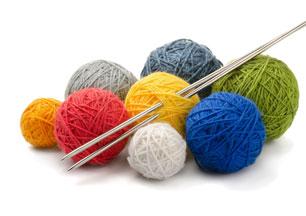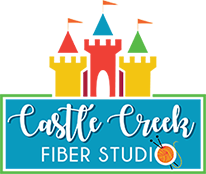What is Knitting?

If you’re new to the craft, the terms knitting, weaving, and crocheting may all seem like the same thing. However, each practice has its own tools, methods, and advantages. Knitting is an ancient art comprised of interlocking fabric through a series of loops known as stitches. You see it used in various apparel and crafts. Unlike crocheting, knitting uses a pair of needles instead of just one.
Looping Generations
Think knitting is a grandmother’s craft? Think again! Historically knitting was a communal art; societies leaned heavily upon this craft for everyday survival. From sharing fibers, to tips and stories, people young and old would come together to learn from each other and strengthen their stitches as well as their bonds.
Throughout history, knitting has been used for more than just creating everyday items. It has also been used to distinguish between tribes or groups, and create ceremonial items. While individual households no longer depend on these skills for survival, there is something quite intimate about this ancient craft. It has a way of bringing generations together while remaining pleasurable, recreational, and therapeutic.
Knitting Terms and Abbreviations
As with any craft, knitting has its own unique sets of terms, many of which you’ll find abbreviated. Below is a helpful collection of some of the most commonly used terms, along with their abbreviated form. Please feel free to use this as a cheat sheet, especially if you are just starting out:
- Alt: Alternate
- Approx: Approximately
- BC: Back cross
- Beg: Beginning
- Bet: Between
- CA: Color A
- CB: Color B
- CC: Contrasting Color
- CDD: Center double decrease
- CH: Chain using crochet hook
- CN: Cable needle
- CO: Cast on
- Cont: Continue
- C2L: Cross 2 stitches to the left
- C2R: Cross 3 stitches to the right
- C2PL: Cross 2, purl left
- C2PR: Cross 2, purl right
- Dec(s): Decrease(s)
- DK: Double knitting weight yarn
- DPN: double pointed needles
- EON: End of needle
- EOR: End of row
- FC: Front cross
- Fl: Front loops
- Foll: Following
- Grp(s): Group(s)
- Incl: Including
- Inc(s): Increase(s)
- Hk: Hook
- K: Knit
- K1b: Knit one through the backloop
- K2tog: Knit two stitches together
- Kfb: Knit in the front of the stitch, and then in the back of the stitch
- KTBL: Knit through the back loop of the stitch
- Kwise: Knitwise
- Lh: Left hand
- M1: Make one stitch
- P: Purl
- P2tog: Purl two stitches together
- Pat: Pattern
- Pfb: Purl into the front of the stitch, and then the back of the stitch
- Pm: Place marker
- Prev: Previous
- Psso: Pass slipped stitch over
- Ptbl: Purl through the back loop
- Pwise: Purlwise
- Rem: Remaining
- Rep(s): Repeat(s)
- Rh: Right hand
- Rnd(s): Round(s)
- Rs: Right side
- Skp: Slip 1, Knit 1, Pass slipped stitch over
- Sk2p: Slip 1, Knit 2 together, Pass slip stitch over
- Sl1st: Slip 1, stitch to right needle without knitting it
- Ssk: Slip, slip, knit
- St(s): Stitch(es)
- Stst: Stockinette stitch
- Tbl: Through back loop
- Tfl: Through front loop
- Tog: Together
- Ws: Wrong side
- Wyib: With yarn in back of work
- Wyif: With yarn in front of work
- Yd(s): Yard(s)
- Yfwd: Yarn forward
- Yo: Yarn Over
- **: Repeat instructions between asterisks as required
- ( ) or [ ]: Repeat instructions with parenthesis or brackets as required
